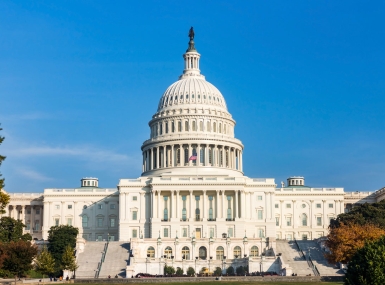EPA, under the previous administration, finalizes rule setting new restriction on scientific studies used to set pollution standards
Upcoming Events
Related News

On January 5, the U.S. Environmental Protection Agency’s (EPA) finalized its Strengthening Transparency in Regulatory Science rule, which the agency proposed in March 2020. The new rule requires the agency to rely heavily on studies that make their underlying data transparent and primarily public when setting pollution standards. The restrictions would apply to research the agency bases regulations on, along with "influential scientific information" the agency disseminates that could affect public policies or private-sector decisions. The rule, which was finalized before the Biden administration took office, went into effect on January 6, 2020.
Originally proposed by former Administrator Scott Pruitt in 2018, the final rule comes after the EPA’s Science Advisory Broad criticized the original proposal, which they believe would effectively prevent the agency from using studies on the effects of pollution on human health. Participants in those studies often agree to be studied on the condition that their personal health information remains confidential, making the data unavailable to the public.
The new rule broadens the original proposal and will allow EPA to conduct studies with non-public data for rulemakings if the authors allow for full access to the data for independent validation. Additionally, the rule does not outright bar studies without public data from consideration, but it does require the agency to give those studies lesser consideration.
NACo believes national air and water quality standards should be set using well-founded, peer-reviewed scientific evidence. Public review of standards is essential and should include the range of health effects associated with the pollutant, the levels of pollution as they relate to the effects on health, the characteristics and number of people affected, and the compounded effects when multiple pollutants are present.
Advocacy
EPA launches new online database of land, air and water information
The U.S. Environmental Protection Agency (EPA) launched the Clearinghouse for Environmental Finance (Clearinghouse), an online database of land, air and water information

Related News

U.S. House of Representatives passes SPEED Act and other permitting reform bills
On December 18, the U.S. House of Representatives passed the SPEED Act (H.R. 4776). The SPEED Act would strengthen county involvement in decision-making and make needed commonsense reforms to the federal environmental review process.

House Natural Resources Committee advances the Endangered Species Act Amendments Act of 2025
On December 17, the House Natural Resources Committee advanced the Endangered Species Act (ESA) Amendments Act of 2025 (H.R. 1897). The version passed by the committee adopted several changes from the initial bill and would address key county concerns by improving the implementation of the ESA. The legislation now awaits a floor vote before the whole U.S. House of Representatives.

Senators introduce bipartisan UPGRADE Act to support small and rural public water systems
On December 15, Sens. Lisa Blunt Rochester (D-Del.) and Roger Wicker (R-Miss.) introduced the Unincorporated Partnerships for Grant Resources, Assistance, and Drinking Water Enhancements (UPGRADE) Act (S. 3465), a bipartisan bill that would strengthen federal support for small public water systems and helps unincorporated communities access clean and affordable water.